Books in disguise: what to do during the Allied invasion
Document of the month: FO 898/484
Guy Woodward finds an invasion manual disguised as a novel
A few months ago I wrote about a miniature edition of John Steinbeck’s novel The Moon is Down (1942) produced for distribution in occupied France. The copy which I found in the PWE papers at the National Archives does not credit Steinbeck as author and its verso title page is blank, carrying none of the usual information regarding publication date or place. These omissions were surely designed to avoid arousing the suspicions of enemy agents, and thereby to aid clandestine circulation of the book.
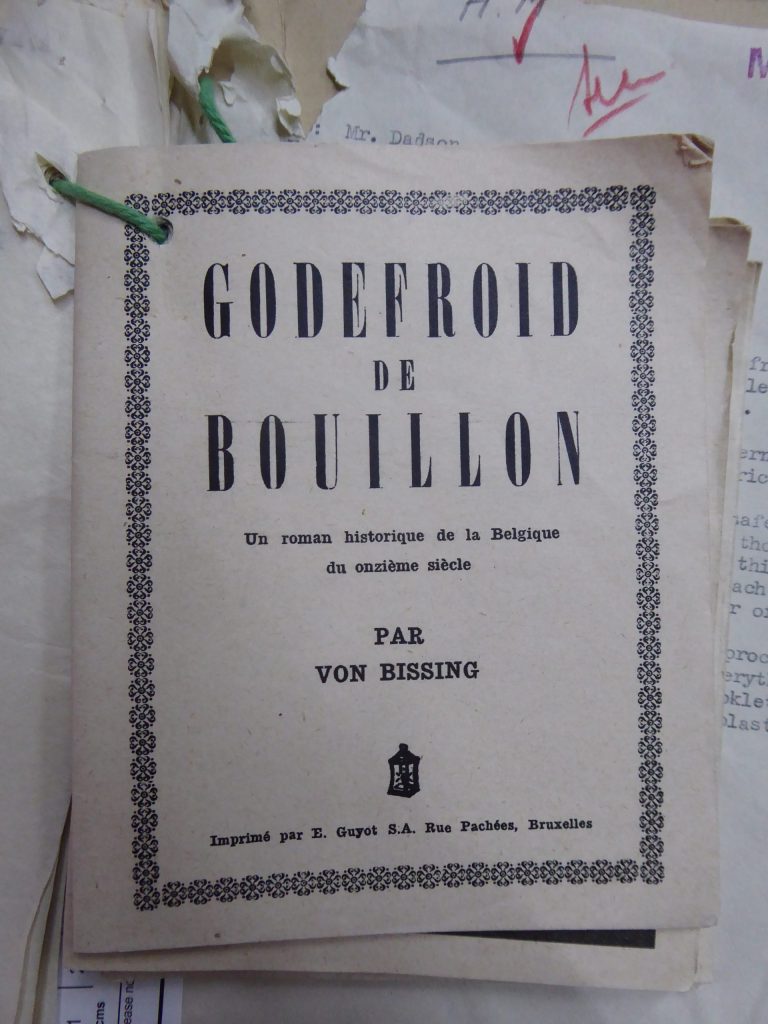
This booklet, which appears in file 898/484, ‘Basic Manuals For Natives Of Occupied Countries: Correspondence’, aims more explicitly to deceive. The outside cover suggests a cheap edition of a historical novel entitled Godefroid de Bouillon, by a writer named ‘Von Bissing’ and subtitled ‘Un roman historique de la Belgique du onzième siècle’. The publisher is given as E. Guyot, with an address of S.A. Rue Pacheés, Brussels.
As one of the leaders of the First Crusade in the eleventh century, and briefly ruler of the Kingdom of Jerusalem from 1099-1100, Godfrey of Bouillon’s story is certainly ripe for fictional exploitation, and yet it seems this novel never actually existed. Were an incurious Gestapo officer to glance at the cover of the booklet he might simply assume that it was a novel, but when the booklet is opened, the message which greets the reader on the title page makes the true nature of its contents clear.
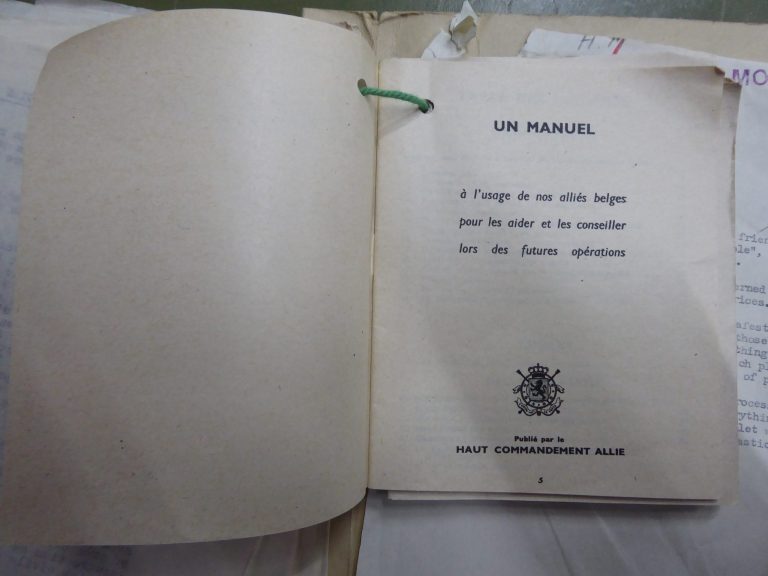
The booklet now announces itself as ‘a manual for the use of our Belgian allies, to help and advise them during future operations’. Below the Belgian coat of arms the publisher is identified as the ‘Allied High Command’. The manual is divided into two sections, ‘How you can prepare for the arrival of the United Nations forces’ and then ‘What to do on the day that the United Nations forces arrive’.
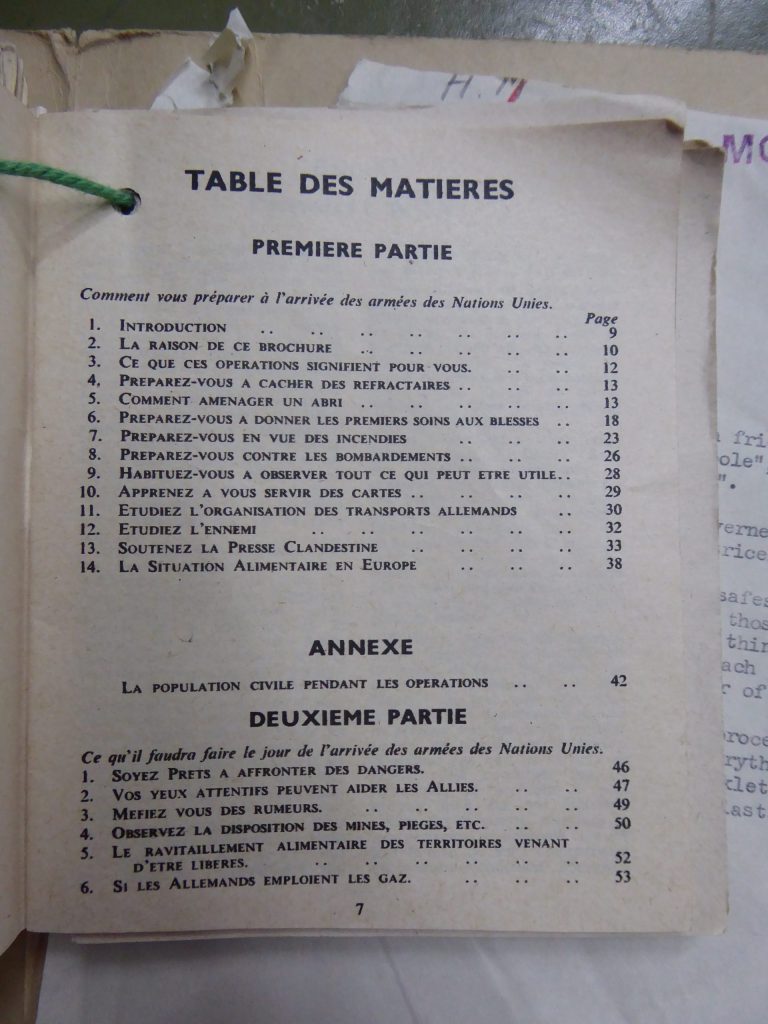
With the aid of several illustrations the booklet provides guidance on sealing doors and windows against gas attack…
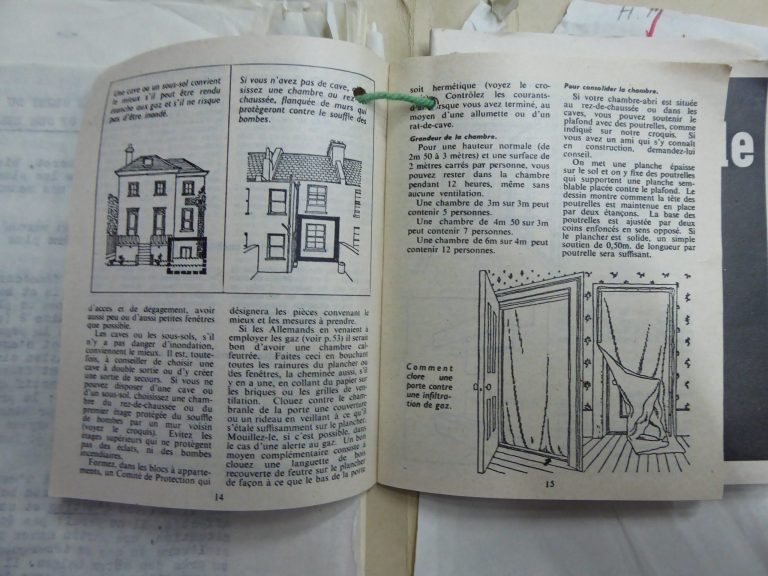
…on fashioning bandages and tourniquets…
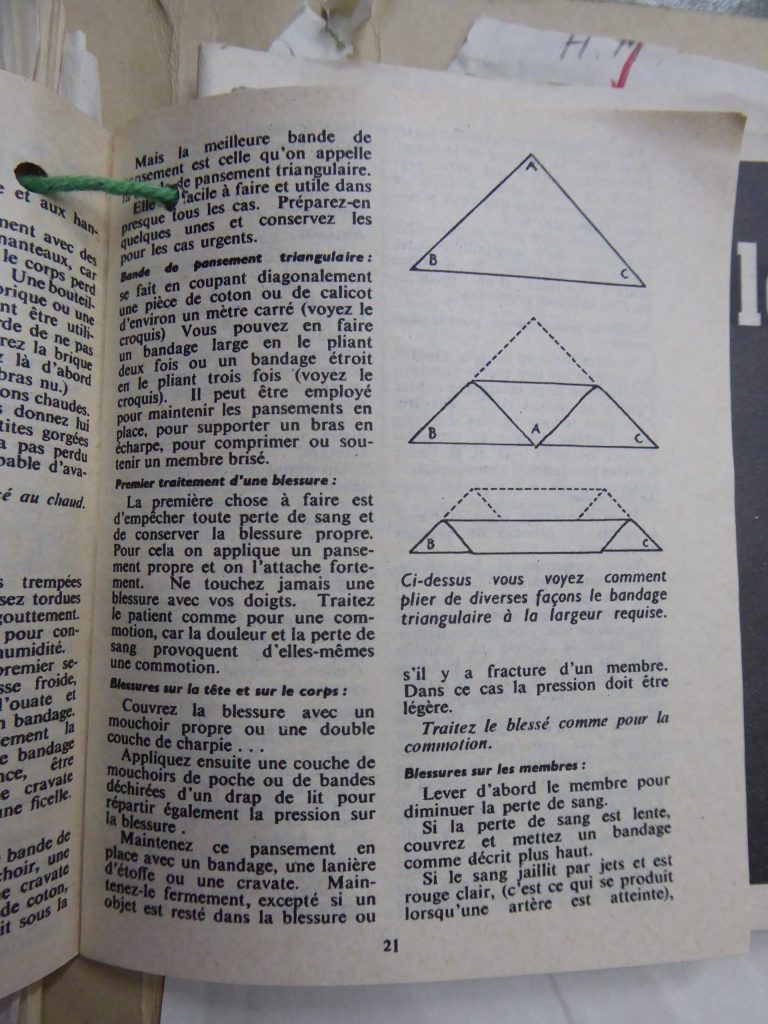
…on how to drag someone who has fallen unconscious from a room…
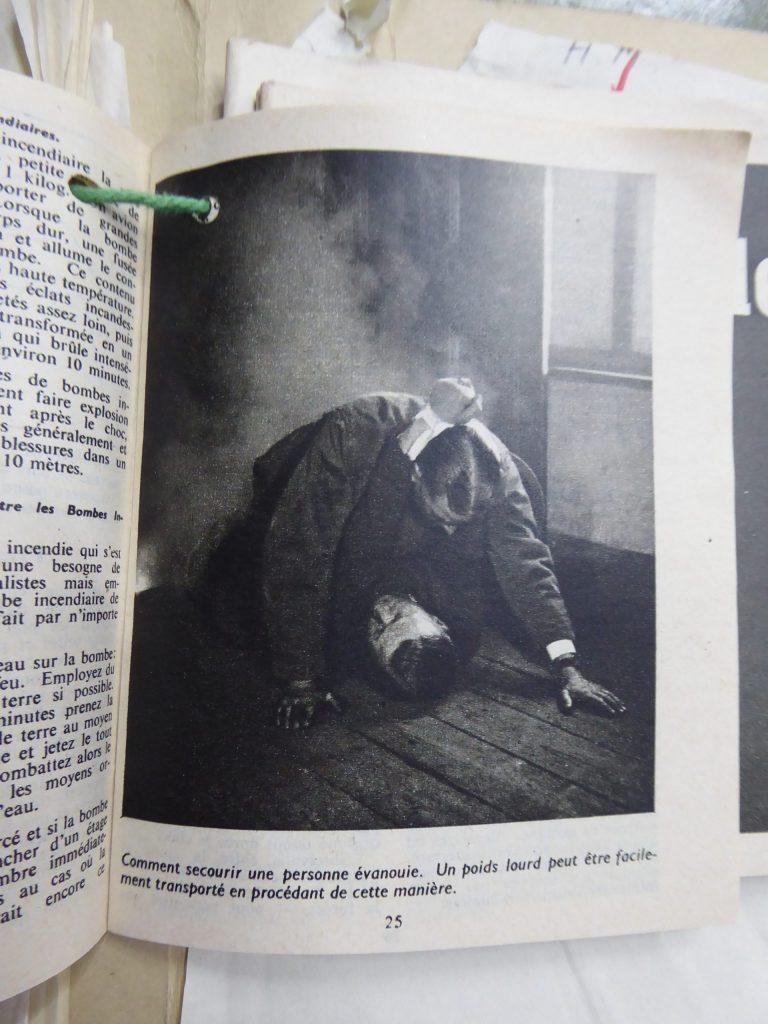
…on how to orientate oneself using landmarks and, at night, constellations of stars…
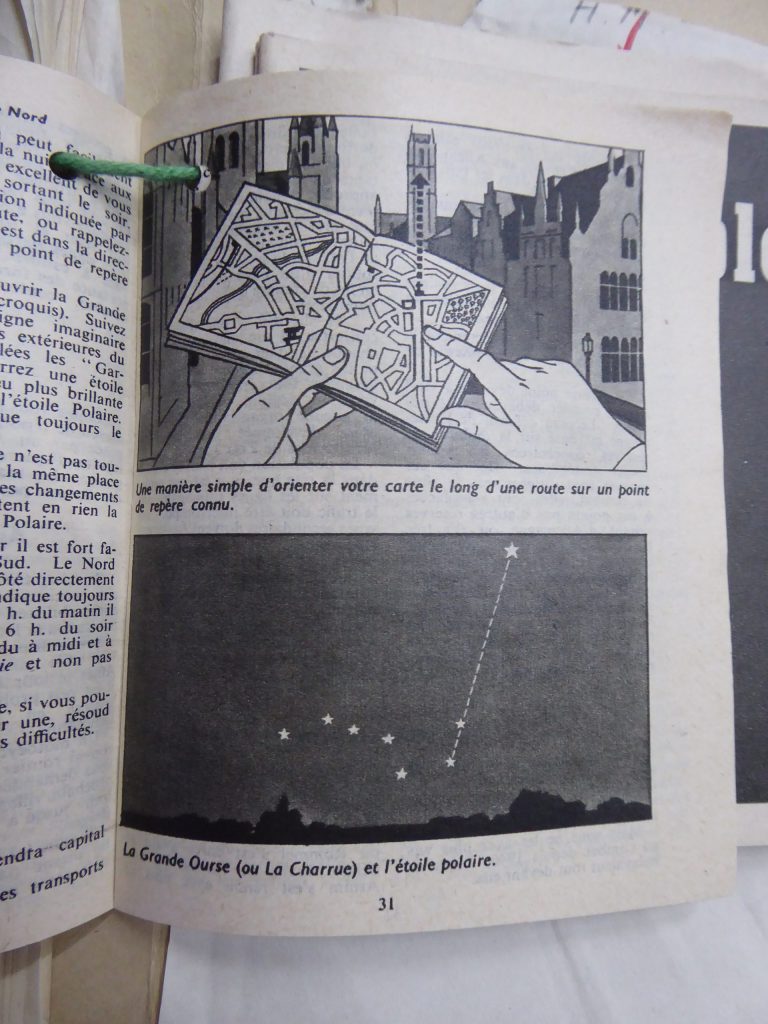
…and on how to conduct sabotage, here showing how a road block can be fashioned using boulders and trees.
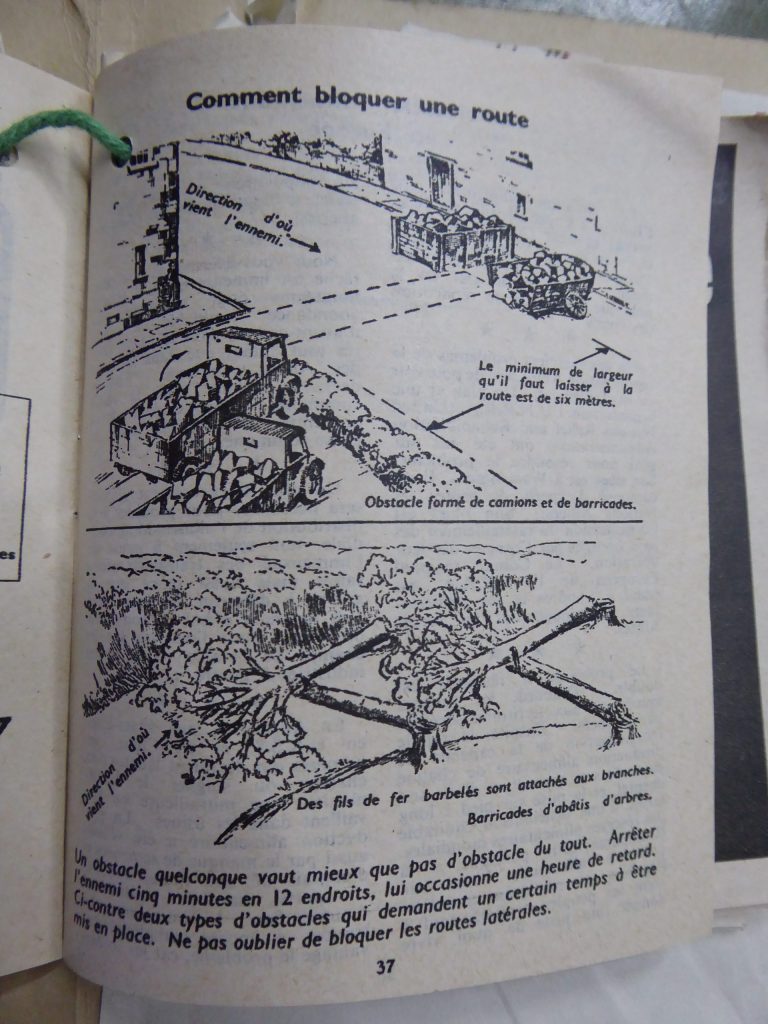
Designed to be dropped by aeroplane, the manual is small (10.5 x 13 cm) and lightweight. It was prepared in early 1944 as plans for the Allied invasion gathered pace, and was designed to advise Belgian civilians on how to behave during the coming conflict between the Allies and the German occupiers. It tells civilians ‘to be vague and stupid’ when questioned by German forces, but to provide directions and assistance when requested by Allied troops. A joint PWE/SOE publication, by 31 March 1944 two million copies of the manual had been printed and were in storage ready to be dropped, but the file does not confirm whether the manual was distributed as planned.[1]
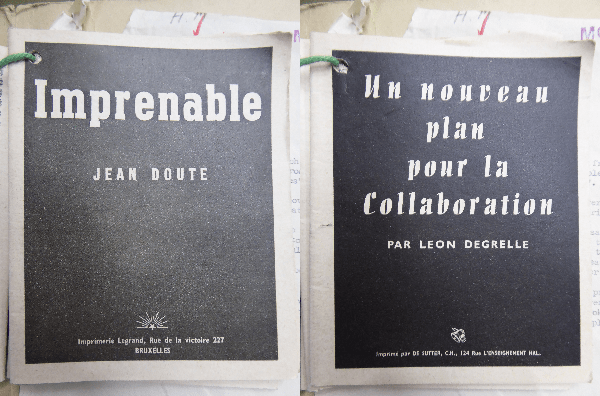
The manual was published under at least two other disguises – Imprenable, by ‘Jean Doute’, and, startlingly, Un nouveau plan pour la collaboration, by Leon Degrelle – Degrelle was leader of the far-right Rexist party and a prominent Belgian collaborator with the Nazis. Like most printed propaganda for Belgium the manual was produced in both French and Flemish editions – on the cover of the Flemish editions ‘Jean Doute’ became ‘Jan Scepticus’ and Leon Degrelle became ‘Staf Leclercq’. Apart from Degrelle, none of the other writers seem to have existed and, like ‘Von Bissing’, were likely invented for the purposes of deception.
Images by kind permission of The National Archives
Notes
[1] The file suggests that similar manuals were prepared for Denmark, Norway and Sweden.
